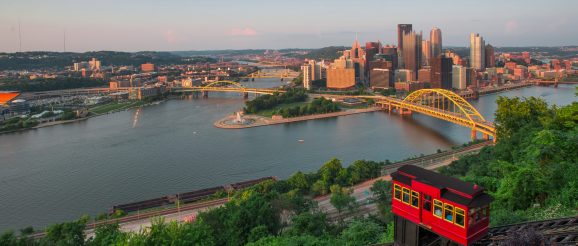‘Crisis drives innovation; now is the time to forge a new future’

 This blog was written by Nicola Yates OBE, Chief Executive of Connected Places Catapult. Nicola is a judge for the Climate Challenge Cup competition.
This blog was written by Nicola Yates OBE, Chief Executive of Connected Places Catapult. Nicola is a judge for the Climate Challenge Cup competition.
On 28 March 1979, the nuclear power plant at Three Mile Island in Pennsylvania, USA, went into partial meltdown, leaking radiation. Luckily, no one was hurt in the immediate incident – but the plant was flooded with contaminated water, making it impossible for workers to get back inside to assess the damage or begin clean-up. Pioneering engineers from the newly-founded robotics lab at Carnegie Mellon University in nearby Pittsburgh saw the potential for using robots to survey the site and make it safe. Five years after the incident, the first specially-built six-wheel ‘Rover’ was lowered into the deepest part of the reactor building to gather data and begin the long process of clean-up.
At the time of the Three Mile Island incident, Pittsburgh was a city in decline, with a falling population and economy ravaged by the collapse of the US steel industry – between 1970 and 1990 an estimated 100,000 local jobs were lost. However, the innovative technologies developed at Carnegie Mellon to explore the flooded basements of Three Mile Island sparked a new future for the city and birthed a new global industry. Pittsburgh is now home to dozens of companies with thousands of jobs forming a cluster, centred on the pioneering innovations catalysed by the disaster.

Three Mile Island nuclear plant
A new moment of opportunity
How we respond to the climate crisis has the same transformative potential as the incident at Three Mile Island. For many, the task seems insurmountable – just as there were those who could see no way to access and clear that flooded basement, there are those who cannot imagine how we will rise to the collective challenge of achieving net zero. There are others, however, who carry the spark of those roboticists who made a way where it seemed there was none and forged a new future.
At Connected Places Catapult, we have met and are working with many such individuals across the UK who are actively working towards delivering against ‘net zero’ targets – from Grafmarine and Atmotech, whose innovations are de-carbonising global shipping, to Zedify who make e-cargo bikes, Twin Dynamics, whose products reduce the energy needs of buildings, and many more besides.
As well as offering vital solutions to the climate crisis, the businesses developing each of these innovations has the potential to transform the destiny of their local economy by creating jobs, attracting likeminded firms and stimulating investment.
The economic renewal experienced by Pittsburgh isn’t guaranteed however. In both the public and private sectors, this can only be achieved by cultivating the right conditions for innovation to thrive locally. Although the focus of innovation activity and the economic geography differs from place to place, the need for innovation is consistent.
Three steps to success
What’s the secret formula? Across successful projects, I’ve seen three key areas. When leaders build on a strong understanding of place, develop coalitions, and invest in long-term outcomes, they tend to thrive.
In terms of understanding place, rather than emulating success stories from other areas, leaders should take the time to reflect on the strengths and limitations of their locality. Does an industrial past mean that land use and zoning reforms could unlock derelict sites for new uses? What parallels are there between historic and emerging industries, where retraining programmes could enable citizens to grasp new opportunities more swiftly? What natural, institutional or human assets already exist in the region which could be harnessed?
Coalitions count too. Creating a hub of innovation requires input and investment of resources from the right mix of stakeholders. This is likely to include both public and private partners, and representation from across industries. The mission is to achieve clear alignment on shared objectives and target outcomes.
Finally, long-term invest is crucial. Growing an innovation ecosystem is not just about shovels in the ground or buildings being erected. Place-making takes time, and leaders must be willing to support the new communities innovation activity attracts, while also dismantling any barriers that prevent current or neighbouring communities from accessing the benefit of investments. Creating spaces for new and existing groups to connect, investing in the skills pipeline, and spreading the benefits of success will help ensure that innovation’s multiplier effect on the broader region will be realised.
Innovation for the future
Just as robotics transformed the prosperity of Pittsburgh and the wider region, net zero innovations are reshaping the economy today. In Pittsburgh, planning and investments over many years from the city council, the private sector, and allied national institutions such as NASA ensured the benefits spilled over and multiplied. Reaping the economic benefits of net zero innovation will require similar vision and collaboration.
The Climate Challenge Cup competition, delivered by The Young Foundation, celebrates research partnerships to combat climate change.Register to watch the final live from COP26.
The post ‘Crisis drives innovation; now is the time to forge a new future’ appeared first on The Young Foundation.
